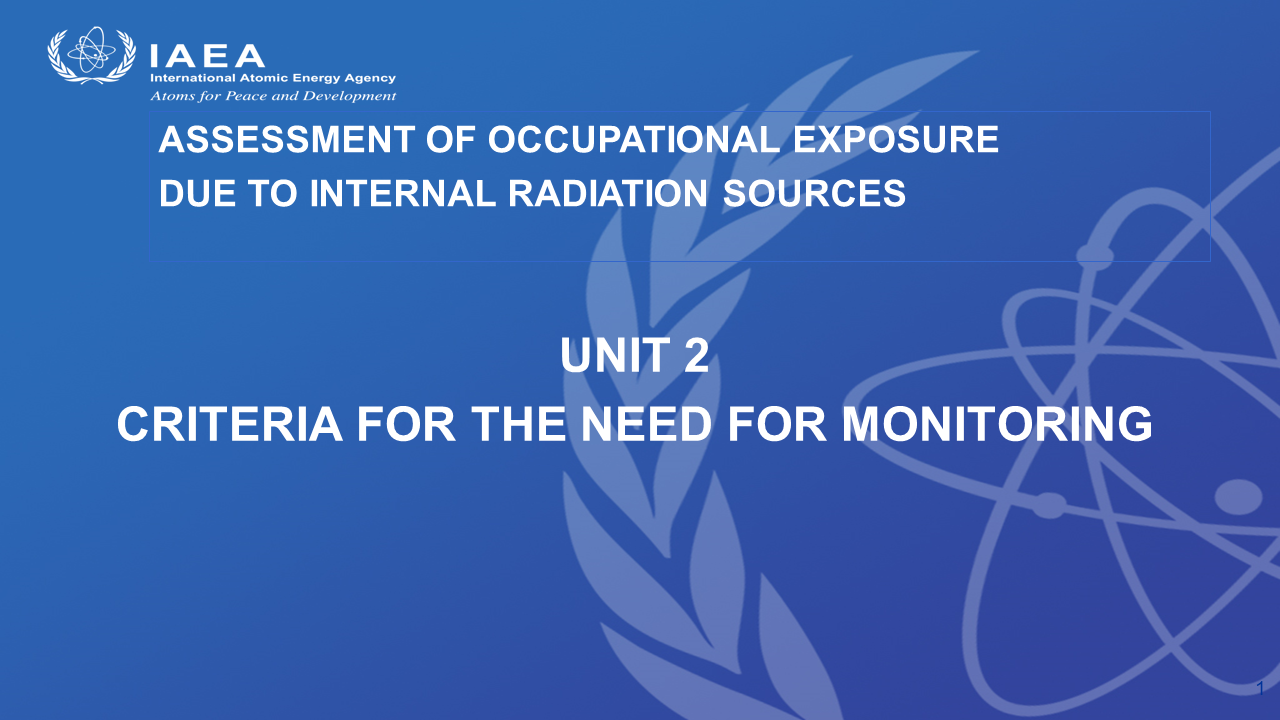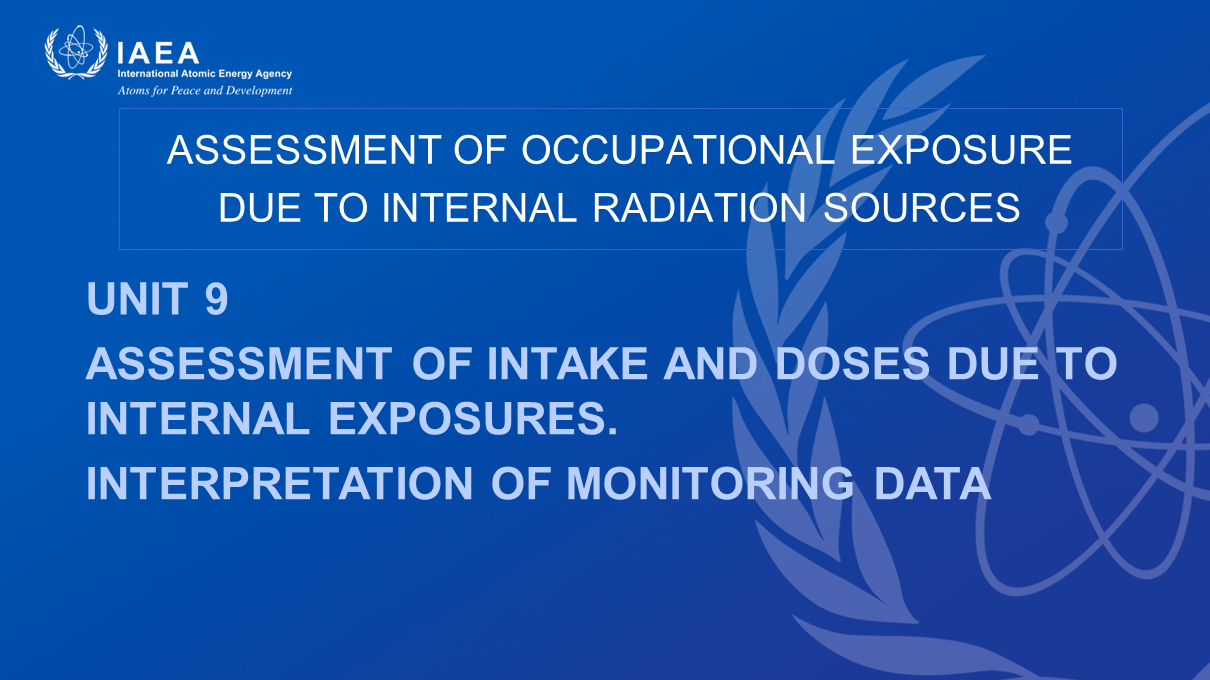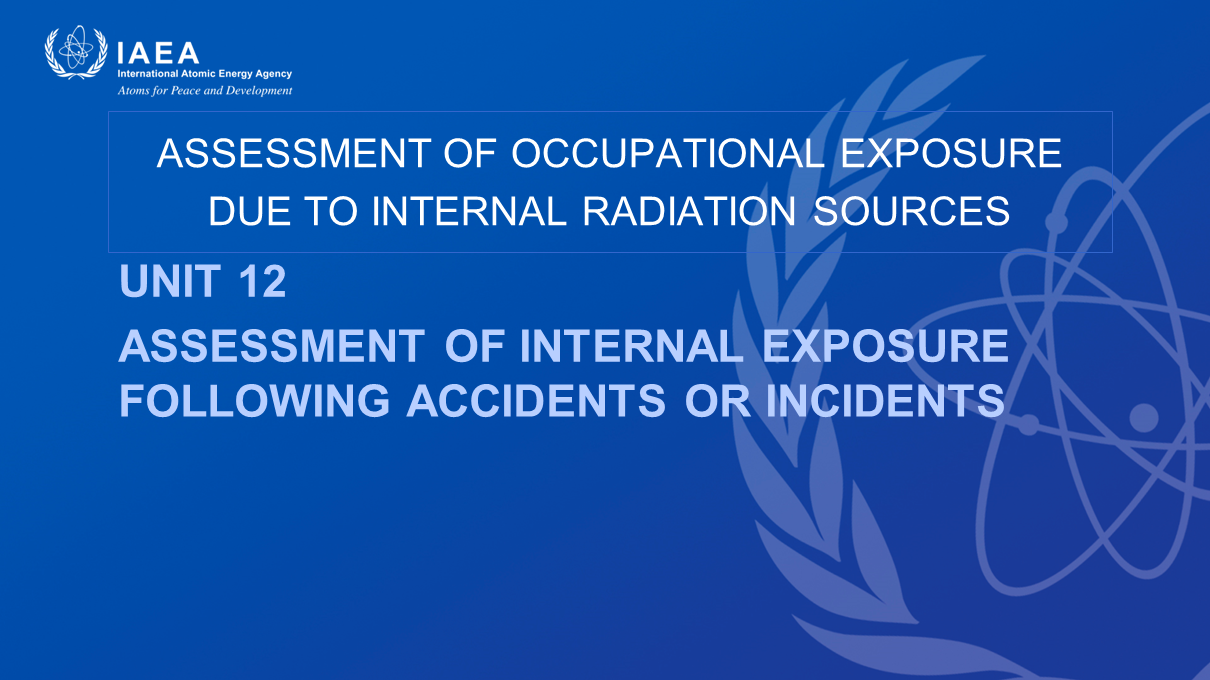Assessment of Occupational Exposure Due to Internal Radiation Sources
Internal radiation exposure can occur in a variety of human activities including, but not limited to, work in the nuclear fuel cycle, NORM industries, and medical procedures.
The IAEA provides training on internal dosimetry in order to aide users to comply with the IAEA Fundamental Safety Principles (SF-1) which present the fundamental safety objective and principles of protection and safety. The requirements to adhering to these fundamental safety principles can be found in Radiation Protection and Safety of Radiation Sources: International Basic Safety Standards, General Safety Requirements, No. GSR Part 3. Additionally, the International Commission for Radiation Protection has produced several different publications for use in the assessment of dose due to internal radiation exposure which will be covered in this training course.
This training course covers various topics associated with internal dosimetry such as the establishment of a monitoring program, the different biometric models used for the assessment of internal dose, methods for monitoring internal dose, software used in the internal dosimetry industry, and much more. Ultimately, this training course should give the user a broad overview of the need for, and the implementation of internal dosimetry.
Approved training packages may be copied, distributed, displayed, incorporated in customised presentations and used for non-commercial use as long as the source of the material is referenced to the IAEA approved training package.
1) Designing a Programme for Monitoring Occupational Exposure
- Types of monitoring programs
- Assessment of external exposure
- Assessment of internal exposure
- Assessment of exposure in emergency
- Skin contamination
- Records of occupational exposure
- Designing a monitoring programme
- Reference levels
- Individual monitoring service
- Customer related issues
2) Criteria for the need for monitoring
- Quantities for internal dose assessments
- Monitoring programs
- Suggested criteria to define the need for monitoring
3) General Principles of the Dosimetry of Internal Exposures
- Exposures to Ionizing Radiation
- Internal Exposure
- External Exposure
- Dose Quantities
- Absorbed Dose
- Radiation weighting factors wr
- Tissue weighting factors wt
- Equivalent Dose, Effective Dose
- Committed Equivalent Dose, Committed Effective Dose
- Annual Doses
4) Biokinetic and Dosimetric Models
- Biokinetic and Dosimetric Models for internal dosimetry
- Human repiraratory tract model (HRTM)
- ICRP Publications 66 and 130
- Human alimentar tract model (HATM)
- ICRP Publications 30 and 100
- Biokinetic and dosimetric models for systemic radionuclides
- ICRP/OIR (Occupational Intakes of Radionuclides) Publications Parts 2-5
- Absorption through a wound
- Wound model of NCRP Report 156

5) Direct Methods for the Monitoring of Internal Exposures
- Methods for individual monitoring and workplace monitoring of internal exposures
- Direct methods for individual monitoring: In vivo monitoring of radionuclides
- Whole-body and partial-body (organ) activity measurements
6) Indirect Methods for Individual and Workplace Monitoring
- Methods for individual monitoring and workplace monitoring of internal exposures
- Indirect methods: in vitro radiobioassay and air sampling
- In vitro measurements of activity concentration in biological samples
- Workplace monitoring - Air sampling
- Advantages and limitations of monitoring techniques
7) Individual Monitoring Programmes - Internal Exposures
- Occupational Internal Dosimetry
- Monitoring individuals exposed to intakes of radionuclides at the workplace
- Types of individual monitoring programmes - Internal exposures
8) Uncertainties
- Sources of uncertainty in dose assessments
- Measurement uncertainty and scattering factors
- Uncertainty in monitoring programs
9) Assessment of Intake and Doses Due to Internal Exposures - Interpretation of Monitoring Data
- Individual Monitoring Data
- Measurement of the activity retained in total/partial body
- Measurement of activity concentration in excreta samples
- Assessment of intake and dose from monitoring data- structured approaches to internal dose assessment:
- ISO Standard 27048, IDEAS Guidelines (EURADOS Report 2013-01)
- EC RP 188 - Technical Recommendations, ICRP/OIR Reports
10) ICRP/OIR Data Viewer - Software for Internal Dosimetry
- ICRP/OIR DATA VIEWER. Electronic Annex of OIR Publications Parts 1-5
- TAURUS - Software using ICRP/OIR Models (ICRP Publication 103)
- IDEA PLUS - Software using ICRP/OIR Models (ICRP Publication 103)
- CADOR MED - Software using ICRP/OIR Models (ICRP Publication 103)
- Software for internal dosimetry based on ICRP Publications 60/78/119
11) Quality Assurance - Dose Recording and Reporting
- Quality Assurance (QA) and Quality Control (QC)
- Accreditation/certification of laboratories and services according to ISO/IEC standards
- Participation of internal dosimetry laboratories and services in national and international intercomparisons
- Dose recording and reporting
12) Assessment of Internal Exposure Following Accidents or Incidents
- Introduction
- Post event information requirements
- Post event monitoring
- Follow-up monitoring
- Developments on emergency dosimetry














